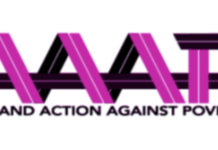Headline: Living wage offers hope to low-paid workers
By Deena Coster
The financial benefits on offer to some people employed in Taranaki’s more lucrative industries are not necessarily enjoyed by all.
Although industries such as oil and gas have boosted Taranaki incomes to among the highest in New Zealand, the economic spinoff has had no impact on people like Trish Brown.
Ms Brown is a Hawera-based cleaner employed by Spotless. She earns $14.25 an hour and has been on this rate for about six years. She works two cleaning jobs to make ends meet.
“It’s that tight it’s just not funny,” said the 55-year-old.
BALANCING ACT: Hawera’s Trish Brown works two cleaning jobs to make ends meet and says life would be much better with the introduction of a living wage.
She knew of cleaners directly employed by the oil and gas industry who were being paid more than $20 per hour, she said.
But during the two months Ms Brown was subcontracted by Spotless to work on Greymouth Petroleum’s Midhirst site, she was paid $14.25 with no travel expenses.
“I do peanuts,” she said.
Ms Brown said she struggled to afford her 16-year-old granddaughter’s school uniform and fees, and sometimes would walk to work as she could not afford petrol.
“I have to cut something back sometimes to get to work,” she said.
Taranaki Daily News’ attempts to speak to the Spotless head office in Australia yesterday proved unsuccessful.
Sam Jones, the New Plymouth-based Service and Food Workers Union (SFWU) organiser, said situations like Ms Brown’s were not uncommon.
He knew of people sub-contracted to the oil and gas, engineering and dairy industries who were living in poverty and would benefit from being paid a living wage.
“People are living hand to mouth, week to week,” he said.
A living wage is defined as the level of income necessary to provide workers and their families with the basic necessities of life.
Research completed by the Lower Hutt-based Family Centre Social Policy Research Unit set the living wage at $18.40 an hour, compared to the minimum wage of $13.75 an hour.
Mr Jones said the economic impact on bigger industries like oil and gas of implementing a living wage would be minimal.
“It wouldn’t be a blip on their balance sheet,” he said.
Mr Jones said no Taranaki employers had signed up to the living wage campaign, but there was potential for the province to lead the way if large employers like Fonterra got on board.
Ms Brown supported the living wage campaign and said that it would make a lot of difference to her life.
“You’ve got no idea,” she said.
The SFWU is part of a group, which included other union groups, churches and other social agencies, which promoted the concept of a living wage.
Ad Feedback
“People are excited about this as one of the answers to poverty in our community,” Mr Jones said.
AT A GLANCE
Who might benefit from the proposed living wage:
– Between 500,000 and 750,000 people in New Zealand are living in households with incomes below the poverty line
– Around 270,000 New Zealand children are estimated to be living in poverty
– Some 90,500 New Zealand workers are currently on the minimum wage ($13.75 an hour) and 573,100 earn less than the Living Wage ($18.40 an hour)
– Women, Maori, Pasifika, disabled people and youth are more likely to be on low wages
Source: Living Wage Aotearoa
Deena Coster is a Witt journalism student
—






